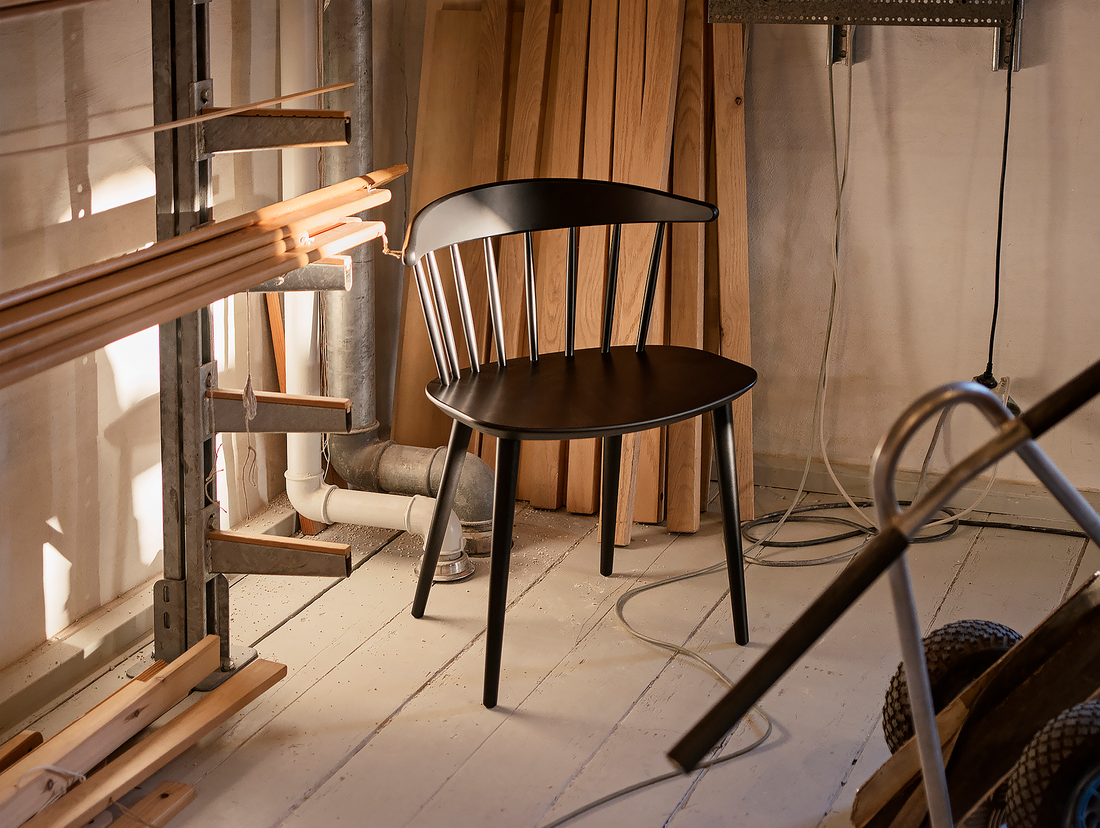J-Series chairs were the brainchild of Danish Architect and Designer Børge Mogensen (pictured below). Although nothing as well known as his contemporaries like Arne Jacobsen and Hans Wegner, Mogensen is credited with producing a furniture typology that is present in many more homes than his colleague's creations.
Under the tutelage of Kaare Klint (the father of modern Danish design), he developed a style of furniture derived from traditional English Windsor chairs. Whereas the original English styles were each produced by many hands, Mogensen's J-Series chairs took advantage of new technical developments in mass-production, making the chair far more efficient to manufacture.
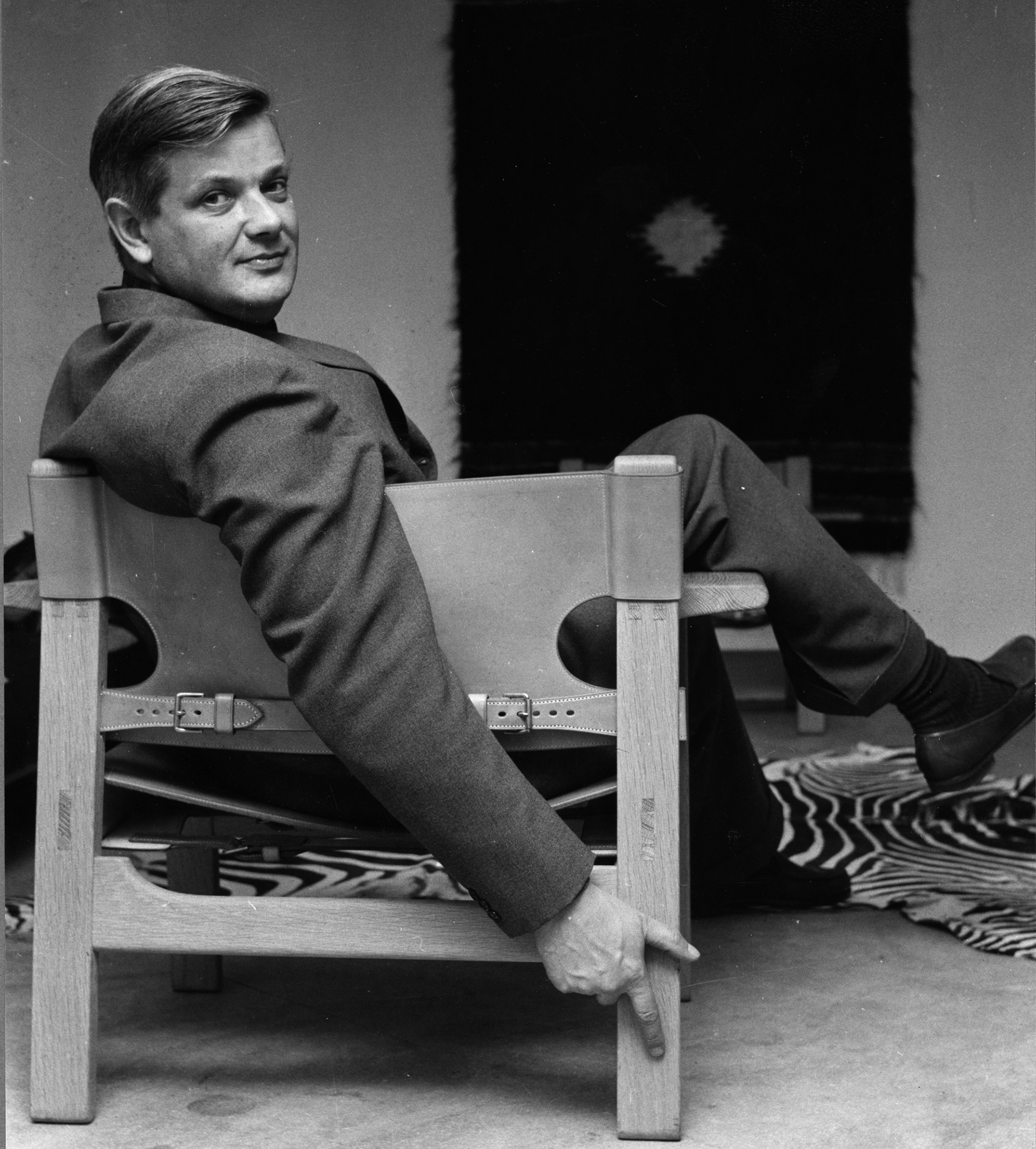
Klint laid the foundations of what we most associate with Danish furniture of today: Minimal, uncomplicated designs often crafted from wood. Unlike the Bauhaus/Modernist movement, which advocated a complete break with styles of the past, Klint believed in building on and adapting the existing traditions of furniture design. Mogensen was a great pioneer in this direction and in 1942 became the director of FDB Møbler - A co-operative of Danish furniture producers and designers. By simplifying the traditionally decorative approach of wooden furniture, FDB Møbler was able to produce furniture quicker and therefore cheaper than before. This is probably the first example of what is now often coined as 'democratic design'.

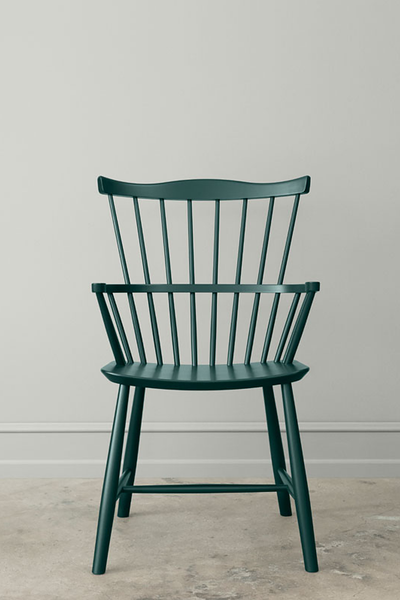
Throughout the 1940's and 1950's Mogensen designed a wide range of 'J-Series' chairs, benches and tables with low price points, they proved exceptionally popular inside Denmark and beyond. This approach of furniture as an everyday object rather than a high-value commodity was the start of Scandinavia's ascendency to flat-packed greatness! Mogensen remained with FDB until 1959 when he decided to set up his own practice. His best known designs like the Spanish chair were created after his tenure at FDB, but it is the quiet designs of the J-Series that endure today as everyday affordable designs.
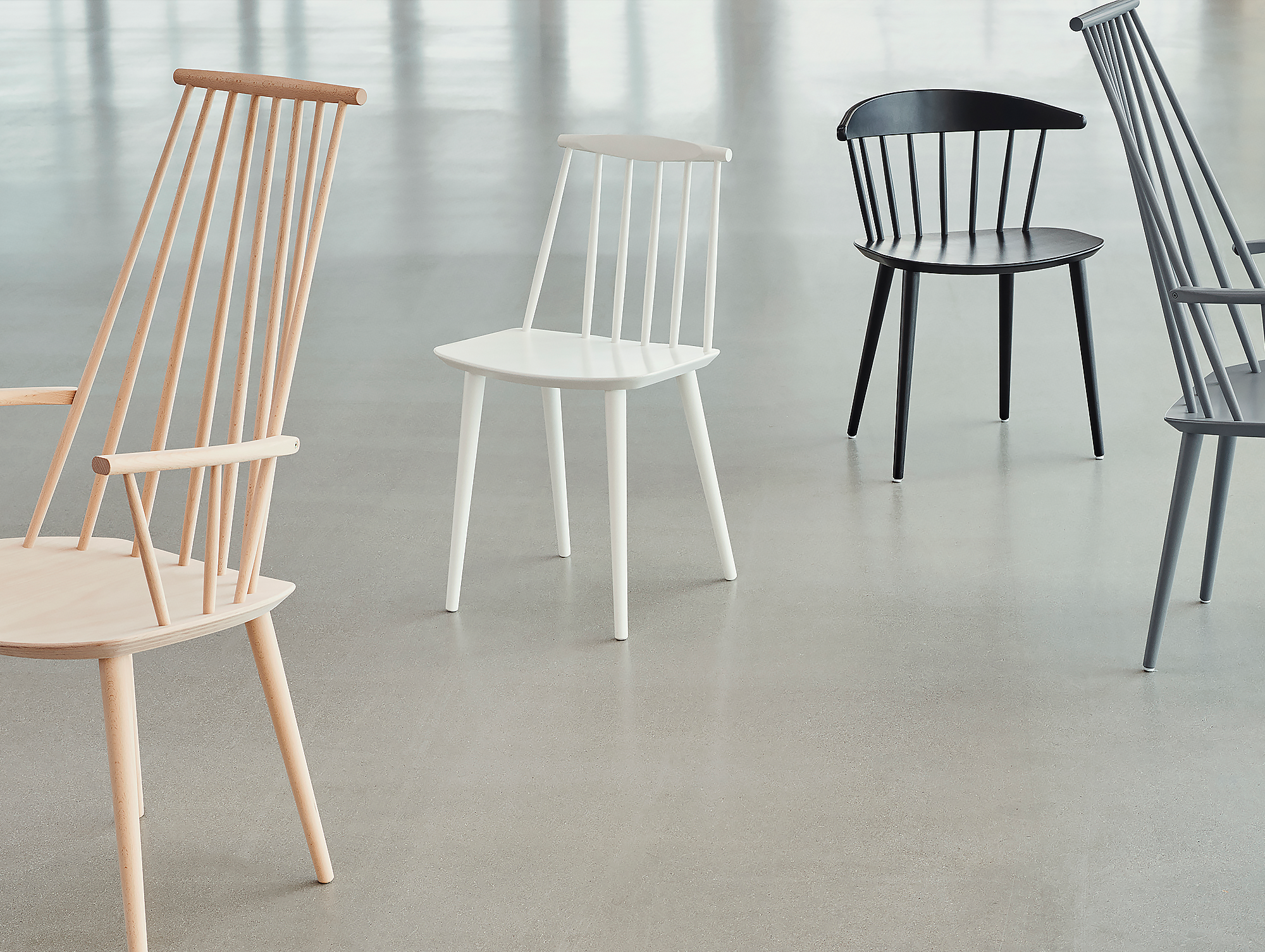
When HAY was founded in 2002 their ambition was to encourage Danish design to return to the innovative greatness of the 1950’s and 1960’s, but in a new contemporary context. With the new concepts and ideas they introduced, HAY also brought the J-Series chairs back to the market, which by this point in time had not been manufactured for many years. HAY kept the designs almost unchanged apart from a clever adaption to the legs. By adding a bolt to the legs and a threaded insert to the underside of the chair it allows the chairs packaging size to be reduced by over 50%. This allows shipping to be cheaper, more efficient and reduces the risk of damage in transit. The chairs are shipped with the legs separate to the chair and the purchaser simply has to screw the legs into place on arrival.
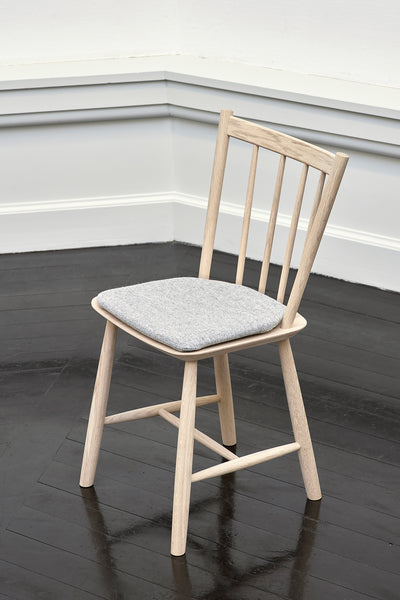
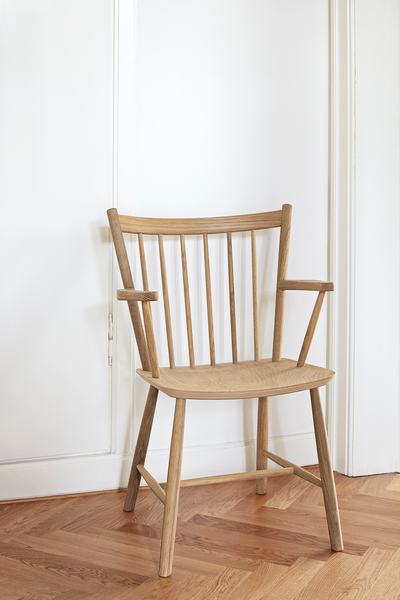
Since HAY began 16 years ago many designs have come and gone, but the J-Series chairs continue to be one of the most popular ranges in their collection. This year HAY have added two more reissues; the J41 and J42 chairs. With the two new chairs HAY have taken a more premium approach to the design. The chairs have stretchers joining the legs together for strength and rigidity and they are also available in solid oak for longevity. To add an optional extra level of comfort, custom designed seat pads have been created to complement each J-Series chair. They are available in three tones of grey fabric and either black or cognac silk leather.
Stay tuned for our very special offer which will begin on the 21st of September and click here to browse the full HAY collection.

